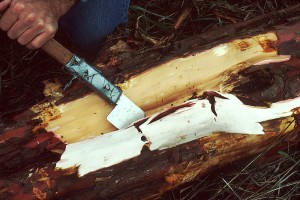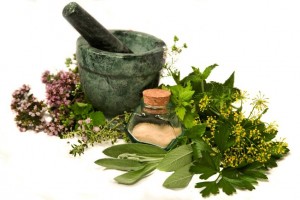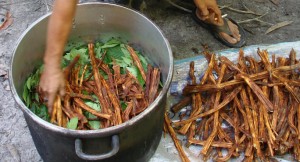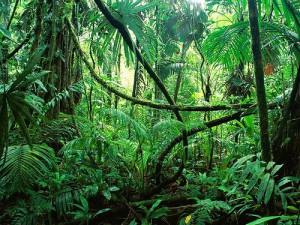What is the difference between a drug and a medicine?
We use the terms interchangeably, though drugs are more readily labeled as illicit substances that lead people down a path of psychological addiction and abuse. Medicine is viewed as a synthetic, technological tool that helps us heal. There is a lot of money to be mined in both instances.
The difference between the two, like most things, is really a matter of perspective, which means there are scattered and refracting viewpoints that make a simple conversation polarizing and complex.
The cultural conversation around psychedelic drugs is resprouting in the US, as these substances are being investigated as potentially viable in helping people come to terms with terminal illness. There are stories of not just coming to terms with, but also healing from otherwise incurable diseases with these potent molecular forms.
Ayahuasca — seen as the most intensely spiritual of the psychedelics — is an herbal brew of several plant species steeped in ritualistic mystique. It could be viewed as both a drug and a medicine. The chemical compound that gives rise to its highly hallucinogenic and reportedly healing properties, dimethyltryptamine, is the very compound that gives it a Schedule 1 label as an illegal substance, with high potential for abuse.
A documentary called The Sacred Science explores the healing potential of ayahuasca within the larger body of knowledge held by medicine men deep in the jungles of Peru, of which ayahuasca is just one part of a larger applied science and belief system — a belief system intimately tied to the spirit.
The movie follows eight people from the United States who are seeking treatment for hard-to-cure illnesses that range from various forms and stages of cancer to Crohn’s and Parkinson’s disease, and alcoholism and depression. The participants agree to stay in the Peruvian jungle for 30 days to work with several different medicine men.
Each participant goes through a transformation, and watching them is painful and inspiring.
The patients undergo a physical and psycho-spiritual component to their healing. They are treated with specific herbal concoctions daily, as well as a very simple diet, and go through several ayahuasca and San Pedro ceremonies to deal with the spiritual component of their diseases.
With “spiritual” meaning “of the spirit,” not pertaining to any religious dogma, we watch the participants come to deeper terms with themselves, and with self-denigrating beliefs that could be tied into the roots of their suffering. They find relief in some form, all of them — even one courageous man who dies in the process.
The Sacred Science is primarily told from the point of view of the patients, with small, interspersed conversations about the lives of the curanderos and their process to become healers. We glimpse a few trips into the jungle for plant/medicine/drug collecting.

Bark from the Pacific yew, which yields Taxol, a chemotherapy drug
(Credit: blogs.scientificamerican.com)
Most major medicines have roots in the natural world. They are synthesized molecules taken from plants. Aspirin was originally culled from willow bark, penicillin comes from a naturally-occuring mold, and Taxol, a chemotherapy drug, was originally extracted from a tree – the Pacific yew, though it now is derived from a non-endangered Yew species from Europe.
These are just a few of many plant-based molecules that we use daily as developed by the pharmaceutical industry, and marketed as cutting edge technology, necessarily divorced from the natural world.
Our materialistic view of life springs from the age of enlightenment and modernity, and frames the natural world as a force teeming with death, the very thing we seek medical treatments to avoid. Disease is seen as a physical phenomenon that can be altered or stopped altogether through physical means, which we call medicine.
Fear of major diseases and pain drives intense cultural investment in staving away our fear of the end — spiritually, emotionally and physically. It is no wonder that we seek those wise souls adept in navigating the more subtle territories of the spirit.
The shamanic curanderos of the Amazon are the storehouses of the knowledge involved in the wild, spiritual processes of both life and death, as supported by the plants that thrive around them. Ayahuasca is considered a “mother plant;” as the story goes, it was through ayahuasca that the curanderos were given the knowledge of all the other healing Amazonian plants.
The Amazon is teeming with life, and only the smallest fraction of the species there, both in plant and animal form, has been indexed in any way. The Amazonian tribes that live in close connection with the thumping, thriving natural world around them are deeply intertwined with life and death as it unfurls, sprouts, shoots up, blossoms, droops, then gives way to the force of death to regrow life.
There is little separation between the forces they see and the forces they feel; what exists externally exists internally as well. The science of the medicine contained within the plants has been passed down for thousands of years, though now the forces of modernity are eroding this knowledge, either through rainforest degradation or the homogenization of culture via capitalism and post-colonial political dysfunction.
Our conceptual understanding of life, disease and death are constantly being reframed. Despite all our major technological and pharmaceutical advances, we still have to face the inevitable progress of death. The number of ways we, as Westerners in the developed world, get to choose our paths is staggering. And one way we can do so is to seek guidance through the alluring wisdom of an Amazonian vine, its leaves and their caretakers.

 Healing (the Spirit) Through Plants
Healing (the Spirit) Through Plants






 Our Annual Seven Holiday Gifts for Someone Who Is Grieving, 2024 Edition
Our Annual Seven Holiday Gifts for Someone Who Is Grieving, 2024 Edition
 “Making Mobiles” by Karolina Merska
“Making Mobiles” by Karolina Merska
 “Hands Up to the Sky” by Michael Franti & Spearhead
“Hands Up to the Sky” by Michael Franti & Spearhead














